Rooted –
in nurturing soil,
a growth inarticulate
in its proliferation
Anorexic pruning –
a painful birth
revealing flowers
of such unexpected beauty
Image: Culloden, August 2010
Rooted –
in nurturing soil,
a growth inarticulate
in its proliferation
Anorexic pruning –
a painful birth
revealing flowers
of such unexpected beauty
Image: Culloden, August 2010
I asked my friend Will to join me on this walk. Will has lived in Wrexham for most of his life and I hoped he could put a personal perspective on some of the places I planned to explore.
Ever since I moved to Wrexham I’ve been aware of the town’s connection with the land-owning Cunliffe family of Acton Hall. The house was demolished many years ago, but the name lives on in the guise of Wrexham’s Acton suburb. Part of the parkland previously surrounding the hall now forms a public park. I sometimes run in this park, Acton Park, and I’ve enjoyed the odd pint in the nearby pub of the same name.
The thing I was not aware of until recently, however, was Acton Hall’s connection with George Jeffreys, the so-called ‘Hanging Judge’. Jeffreys was born at Acton Hall in 1645 and, after reading law at Cambridge and training at the Inner Temple, became James II’s Lord Chancellor in 1685.
He is infamous for presiding over the Taunton ‘Bloody Assizes’ of 1685 in which more than 160 alleged participants in the Monmouth Rebellion were executed. Will recalls seeing Patrick Troughton play Judge Jeffreys in a 1960s television dramatization of Lorna Doone, which I guess gives Acton Hall an extremely tenuous Doctor Who connection too.
We start our walk in Westminster Drive where Will points out the yellow fire hydrant post which, back in the 1970s, he and his childhood friends regularly used in order to climb over the fence into the school playing field to play football. This sports ground, known locally as the Nine Acre Field, was once part of the parklands of Acton Hall until it was purchased by the local Council just after Second World War. Westminster Drive, incidentally, translates into Welsh as Rhodfa San Steffan, an interesting reference to Westminster’s St Stephen’s Hall.
Walking along Chester Road we soon come to one the few remaining parts of the fabric of Acton Hall. The imposing neo-classical gateway marooned at the edge of a modern housing development which was once the main entrance to Acton Hall. It was built in 1820 at the behest of Sir Foster Cunliffe whose family bought the hall in the late eighteenth-century and remained there until 1917.
The symbol of the Cunliffe family is the greyhound: it features on their family crest and is also now used as the emblem of the Wrexham Area Civic Society. The original gateway to the hall had four wooden greyhounds mounted on its top. One disappeared when the US army were stationed at Acton Hall in World War Two and another was destroyed by vandals in 1964. The present greyhounds were made by local art college students in 1982 when the council restored the gates. The students constructed moulds from an original greyhound figure and made four new ones from glass fibre and concrete. One of the original wooden dogs is now housed in Wrexham’s museum.
Adjoining the gates is a pub called, unsurprisingly, The Four Dogs. The Four Dogs has a bit of a reputation locally, although that may be a little unfair as I’ve certainly never had any problems on the couple of occasions I’ve been in there. Allegedly, however, it is the pub of last resort for people who have been banned from all the other hostelries in town.
As we walk we reflect on how pub names often seem to tap into local history and mythology. Across the road from The Four Dogs is a pub called The Acton Park and, a mile or so away on the other side of Acton is another called The Greyhound. Nearby, along the eastern edge of Acton Park is Jeffreys Road, named in memory of the previous occupants of Acton Hall. When a new pub was built here in the early 1970s the brewery invited suggestions for what it should be called. The Whippet, The Swinging Judge, The Hanging Judge and The Scaffold were all rejected before they settled on the rather less edgy name of The Cunliffe Arms.
We turn down Box Lane along what was once the northern edge of the Acton Hall estate. This was once the main road to Chester before the new turnpike on what is now Chester Road was constructed. Supposedly the ‘box’ in Box Lane comes from the sentry box Sir Foster Cunliffe had installed to prevent travellers using ‘his’ road as a cut-through to avoid the toll charges on the turnpike.
Half way along Box Lane we come to Acton Park Primary School. Will’s daughters both attended this school. The oldest part of the school was built in 1917 by the Belgian-born diamond merchant Sir Bernard Oppenheimer. Oppenheimer bought all 224 acres of the Acton Hall estate when the Cunliffe family put it up for sale that year.
He immediately sold 64 acres to the council for what was to become the Acton Park housing estate and gifted 125 acres to a trust set up to provide small-holdings for ex-servicemen. He also built a factory unit on Box Lane on the site of the present school. His plan was to set up a diamond polishing works to provide work for disabled ex-servicemen. The initiative was not a success, however, and the site was sold to the council in the early 1920s.
We take a right down a street called Acton Gardens which leads through to Acton Park. This street edges the former kitchen garden of Acton Hall and some parts of the estate’s original sandstone walls, formerly extending for some 23 miles around its perimeter, are still evident here.
The older houses in Acton Gardens appear to date from the 1920s but, just before we enter the park, we pass through a new development of town houses around a faux-village green. There is also a large three-storey apartment block modelled, so Will tells me, on the original Acton Hall. Although, to my mind, it doesn’t seem to bear much resemblance to the any of the archive pictures I’ve seen.
Acton Hall was built by the Jeffreys family in the sixteenth-century and was the birth-place of Judge George Jeffreys. The house passed through several other hands before being sold to Sir Foster Cunliffe in 1785. He made improvements to the house, expanded the estate and made it the Cunliffe family seat for another 130 years.
But the Cunliffes were not originally from the landed gentry; Sir Foster’s grandfather, who was also called Foster, was a Liverpool merchant who amassed his fortune on the back of the slave trade, a part of their family history which later generations tended to play down.
Sir Foster, the 3rd Baronet of Acton Hall, died in 1834. The final Cunliffe family custodian of the hall was the 6th Baronet, Sir Foster H E Cunliffe, an Oxford don and MCC cricketer. He succeeded to the title in 1905 but died in the Somme in 1916.
By 1917 the Cunliffe family’s fortunes were at a low ebb and they vacated the hall and put its lands up for sale. The house itself remained unoccupied. It was used as a furniture store in the inter-war years and as a billet for the US 33rd Signals Battalion in WW2. The building’s fabric continued to deteriorate and, with no resources to restore it, the council demolished Acton Hall in 1954.
Some of the grandeur of the Acton Hall estate is still apparent to us, however, as we meander across Acton Park. The park comprises 55 acres of grass, trees and ornamental gardens. At its centre is a lake which was once Acton Hall’s fish-pond.
To the south of Acton Park we pass through Wrexham’s oldest council housing estate, also called Acton Park. The first 118 houses were built in 1920 following the ‘garden village’ concept of gardens, crescents, open-spaces and landscaping. The architect was Professor Sir Patrick Abercrombie of Liverpool University. More houses were added in subsequent decades, but they seem to lack the build-quality and imagination of Sir Patrick’s original design.
Beyond the Acton Park council estate we cross a main road and follow Park Avenue back to our starting point in Westminster Drive. Park Avenue is a wide, tree-lined road with an almost continental feel. It was originally called Cooper’s Lane but, when a number of large houses began to be built here in the 1930s, the council felt it needed a grander street name to attract the ‘right’ kind of resident. They also planted an avenue of 52 trees at the then astonishing cost of £22-16s-00d.
Sensing I might be tempted to write something wistful about Acton Hall and days gone by in Wrexham, Will reminds me before we part of the murky antecedents of the Jeffreys and Cunliffe families. Even Bernard Oppenheimer, he added, for all the good he tried to do for people disabled in the Great War, wrested his colonial diamond fortune from its rightful African owners.
But the resonances abound; so many of the street names in this part of Wrexham pay homage to the legacy of Foster, Cunliffe, Acton and Jeffreys. And that greyhound motif keeps turning up in odd places. Which just leaves me with the four dogs. After all, everyone likes dogs.
This past month Psychogeographic Review has been reading:
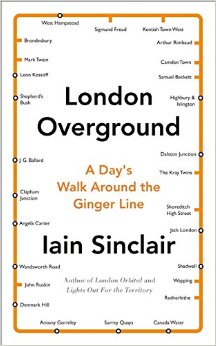 Iain Sinclair – London Overground: A Day’s Walk Around the Ginger Line (2015)
Iain Sinclair – London Overground: A Day’s Walk Around the Ginger Line (2015)
These days Sinclair writes like a man aware that he is running out of time: words tumble out of him, one project after another, often over-lapping. There is a palpable sense of urgency in his work: the flow of words accelerates just as the pace of his walks, the groundwork that is so essential to his style of writing, seems to have speeded up. London Overground follows a typical Sinclair scenario, taking a walk along the route of London’s overground railway, the ‘ginger line’ of the title, and using it as a starting point for Sinclair’s peregrinatory riffs on writers, politics and urban life. Yes, he’s done similar London walks before, but rarely with the pace and verve of this book in which he sets out to complete the entire journey in one day. Sinclair’s companion on his walk, Boswell to his Samuel Johnson, is the film-maker Andrew Kötting, who brings a glowering physicality to Sinclair’s sensory meanderings. But, as ever with Sinclair, the words, the ideas, memories and observations, tumble forth.
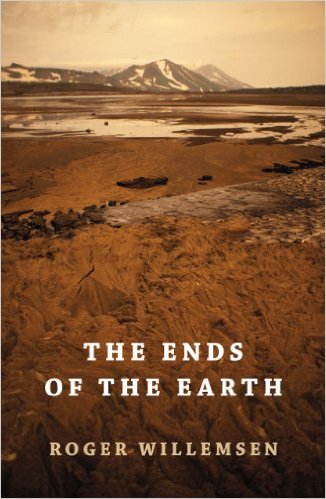 Roger Willemsen – The Ends of the Earth (2010)
Roger Willemsen – The Ends of the Earth (2010)
Roger Willemsen is a respected German writer and television presenter and this is his first book to be translated into English. The Ends of the Earth comprises of series of essays reviewing the author’s travels to some of the world’s remoter corners. But this is not a simple travelogue, because Willemsen is not just a simple observer; he engages at an emotional level with the places he visits and the people he meets. So, whether it is with prostitutes in Mumbai or at a hospital death-bed in Minsk, Willemsen is fully engaged and invites us to join him, not just to gaze but to understand and empathise.
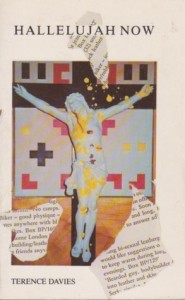 Terence Davies – Hallelujah Now (1984)
Terence Davies – Hallelujah Now (1984)
This is a fascinating read for those of us who are admirers Terence Davies’s Trilogy series of films in which he explores the life of his alter-ego, Robbie. Like the films this, his only novel to date, traces the course of Robbie’s life as he struggles to come to terms with the weight of his upbringing, his Catholicism and his sexuality in the working-class Liverpool of the fifties and sixties. Davies’s vision is clearly more fully realised in film, indeed I would suggest he is a far better film haunting glimpses into Robbie’s interior world.
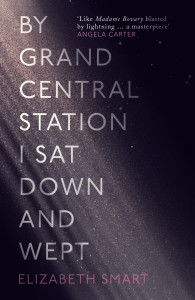 Elizabeth Smart – By Grand Central Station I Sat Down and Wept (1945)
Elizabeth Smart – By Grand Central Station I Sat Down and Wept (1945)
Elizabeth Smart’s prose poem of love, longing and betrayal delivers a visceral punch that is just as relevant today as when it was first written more than half a century ago: “I have learned to smoke because I need something to hold onto.”
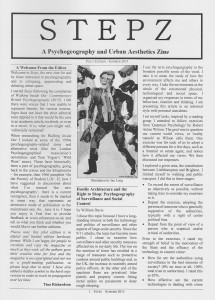 STEPZ: A Psychogeography and Urban Aesthetics Zine (Pilot Edition, Summer 2015)
STEPZ: A Psychogeography and Urban Aesthetics Zine (Pilot Edition, Summer 2015)
STEPZ is the first issue of a new zine launched by Tina Richardson to try to bring together some of the creative expressions of what she terms the new psychogeography. She succeeds in bringing together a host of new voices and some familiar ones, people interested in “critiquing, appreciating and debating urban space.”
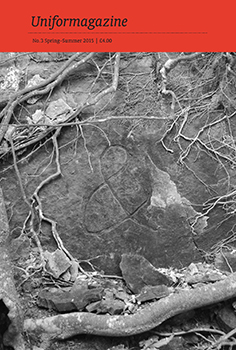 Uniformagazine (No.3, Spring-Summer 2015)
Uniformagazine (No.3, Spring-Summer 2015)
A series of pieces on sounds, images and words each loosely connected by a sense of place: “The uniformity of presentation highlights the variations and particularity of each combination of text and image—the singularity of each work is established by its relationship to other works.”
and listening to:
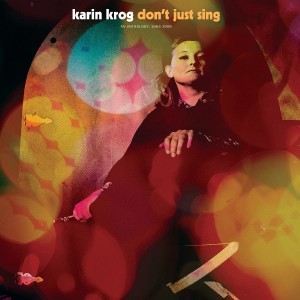 Don’t Just Sing: An Anthology 1963-1999 – Karin Krog (2015)
Don’t Just Sing: An Anthology 1963-1999 – Karin Krog (2015)
Karin Krog is a Norwegian jazz singer whose CV stretches back to the early-sixties and includes work with Steve Kuhn, Red Mitchell, Dexter Gordon and Archie Shepp. Krog’s vocals have been described as sculptural and this collection amply demonstrates the way she is able to shape her voice to extract maximum effect from every syllable.
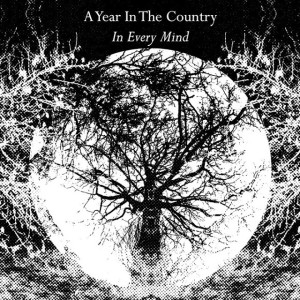 In Every Mind – A Year in the Country (2015)
In Every Mind – A Year in the Country (2015)
“This is the first audiological research and pathways case study constructed solely by A Year In The Country. In contrast to the telling of tales from the wald/wild wood in times gone by, today the stories that have become our cultural folklore we discover, treasure, pass down, are informed and inspired by, are often those that are transmitted into the world via the airwaves, the (once) cathode ray machine in the corner of the room, the zeros and ones that flitter around the world and the flickers of (once) celluloid tales. They take root in our minds and imagination via the darkened rooms of modern-day reverie, partaken of in communal or solitary séance.”
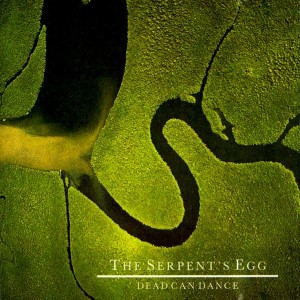 The Serpent’s Egg – Dead Can Dance (1988)
The Serpent’s Egg – Dead Can Dance (1988)
The music of Dead Can Dance is like an ethereal soundtrack meandering its way through ancient churches, stone circles and forest glades. The Serpent’s Egg is one of a string of richly textured albums band members Lisa Gerrard and Brendan Perry produced in the eighties and early-nineties and serves as a good introduction to their work.
This is Cale’s fourth solo album and arguably includes some of his best post-Velvet Underground work. A satisfying fusion of ballads, rock and the avant-garde music Paris 1919 also showcases Cale’s playful lyrics: “Somewhere between Dunkirk and Paris
Most people here are still asleep
But I’m awake
Looking out from here -at half-past France.”
and watching:
 Into the Abyss – Werner Herzog (2011)
Into the Abyss – Werner Herzog (2011)
Into the Abyss is Werner Herzog’s critique of the American penal system and a powerful contribution to that nation’s debate on capital punishment. But this is not mere polemic, although Herzog is a well-known opponent of capital punishment he enables all those included in his documentary to tell their own stories in their own way.
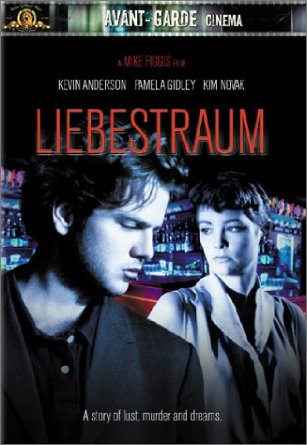 Liebestraum – Mike Figgis (1992)
Liebestraum – Mike Figgis (1992)
Liebestraum is ostensibly a thriller, but Figgis ignores any temptation to offered laboured explanations and instead concentrates on his film’s visual impact, soundtrack and moody atmosphere. In doing so he succeeds in conjuring up the ‘love dream’ of his title; and like all the best dreams it embraces love, death and architecture.
 Get Carter – Mike Hodges (1971)
Get Carter – Mike Hodges (1971)
Michael Caine’s gangster, Jack Carter, is on the loose in Newcastle seeking answers and looking to exact revenge. Hodges created a genre of British crime films later taken up in movies such as The Long Good Friday and Lock, Stock and Two Smoking Barrels. But nothing quite matches Get Carter’s documentary-like evocation of provincial Britain in the 1970s, not to mention its score by Roy Budd and stand-out performances by Caine, Ian Hendry and John Osborne.
But where does the river sit in all of this: as a reflection of (and receptacle for) change?
Surface Tension, Rob St John
This is as far as I can go. I have been following the course of the River Gwenfro across Wrexham and now I have reached its end at its confluence with Wrexham’s other river, the Clywedog, here at King’s Mills. Four miles further on, to the south-east of the town, both rivers will join the Dee.
Both the Clywedog and the Gwenfro rise in the Denbighshire hills to the west of Wrexham. The Clywedog skirts the southern edge of the town while the Gwenfro follows a course right through the centre and forms the boundary of the ancient parishes of Wrexham Abbot and Wrexham Regis, which I have written about elsewhere.
It’s hard to catch sight of the Gwenfro in the centre of Wrexham, as much of it has been culverted. But at an area called Island Green the river emerges and insinuates itself past a 1990s shopping centre and an old brewery now converted into apartments. In the nineteenth-century, Island Green was at the heart of Wrexham’s tanning and brewing industries, the waste from which turned the Gwenfro’s waters into a foul soup.
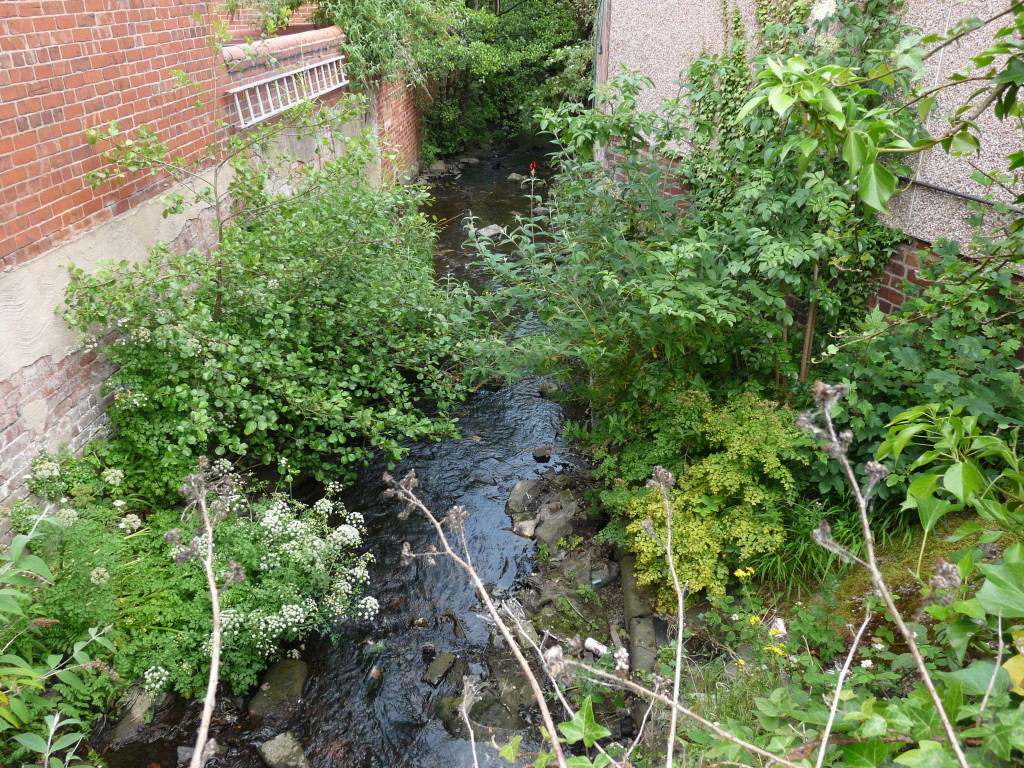 Soon after Island Green the river goes underground once more at Brook Street and doesn’t emerge again for another half mile or so at Rivulet Road. For the intrepid river-hunter, of course, the clues are all there in the street names!
Soon after Island Green the river goes underground once more at Brook Street and doesn’t emerge again for another half mile or so at Rivulet Road. For the intrepid river-hunter, of course, the clues are all there in the street names!
The Gwenfro then channels its way through Caia Park, the largest council housing estate in Wales. Caia Park’s reputation has suffered from its past associations with crime and drug-dealing and there were serious inter-communal riots in 2003. But local people have worked hard to overcome these problems and, on a sunny June day, it was a very pleasant walk across the estate.
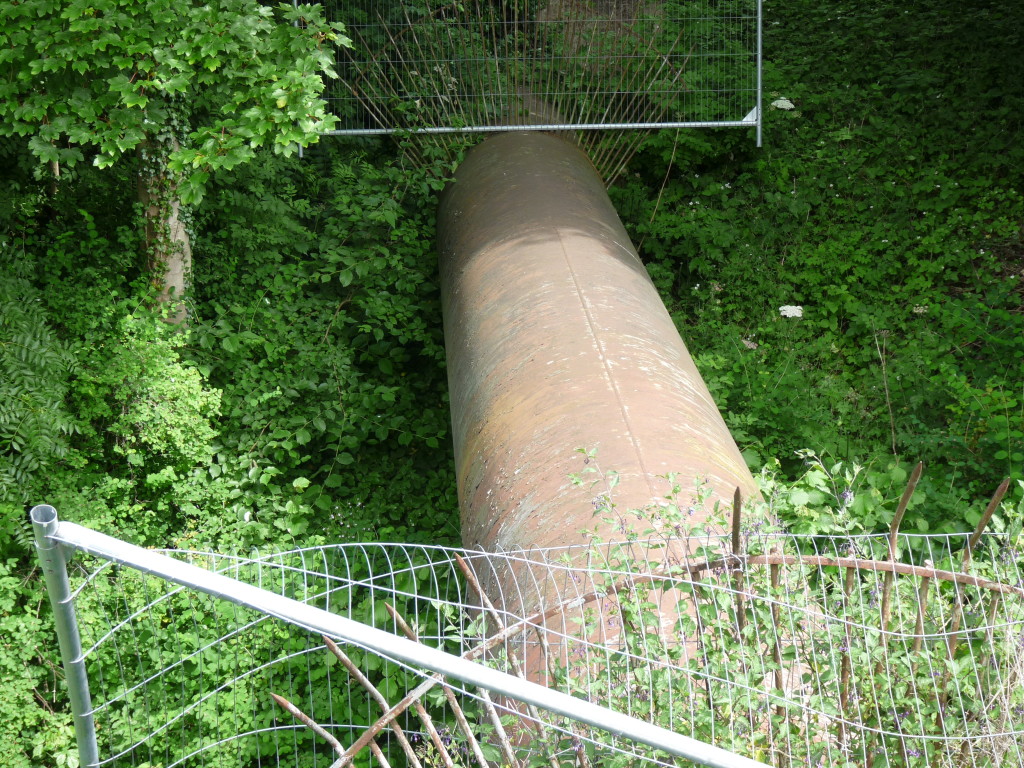
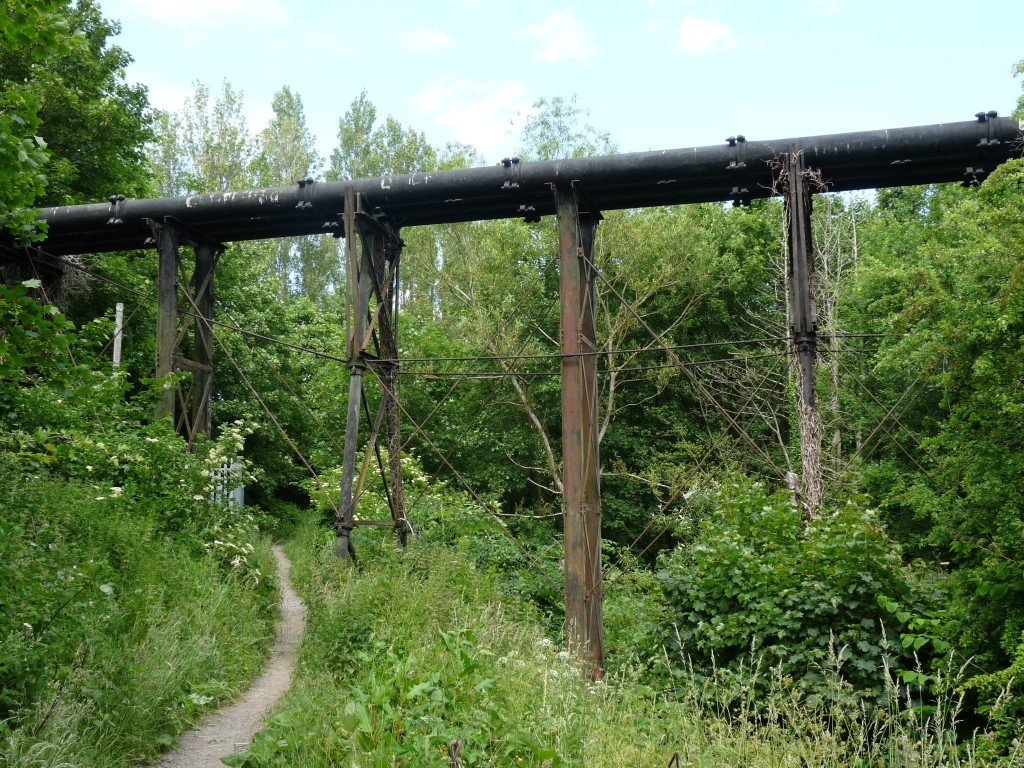 The Gwenfro cuts a green swathe through Caia Park; a ribbon of footpaths, sports pitches, playgrounds, strips of woodland and mercifully neglected green spaces edge the river. Beyond the estate the Gwenfro emerges into what feels like true countryside.
The Gwenfro cuts a green swathe through Caia Park; a ribbon of footpaths, sports pitches, playgrounds, strips of woodland and mercifully neglected green spaces edge the river. Beyond the estate the Gwenfro emerges into what feels like true countryside.
 Its waters are mountain spring clear today, but one can imagine the Gwenfro in days gone by, weighed down with effluent, reaching this point and suddenly being reminded of the trees, meadows and sweet air of the place where it was born. A bit like a work-worn old pit-pony being turned out to grass for its final few days.
Its waters are mountain spring clear today, but one can imagine the Gwenfro in days gone by, weighed down with effluent, reaching this point and suddenly being reminded of the trees, meadows and sweet air of the place where it was born. A bit like a work-worn old pit-pony being turned out to grass for its final few days.
Within another half mile the river and I arrive at King’s Mills. The area was named after its large water mill, the original one being built in the fourteenth-century and the present building, which ceased work in 1940, dating from the eighteenth-century. All of the residents of Wrexham Regis were required to bring their grain to the mill to have it turned into flour and, of course, to pay their taxes to the Crown.
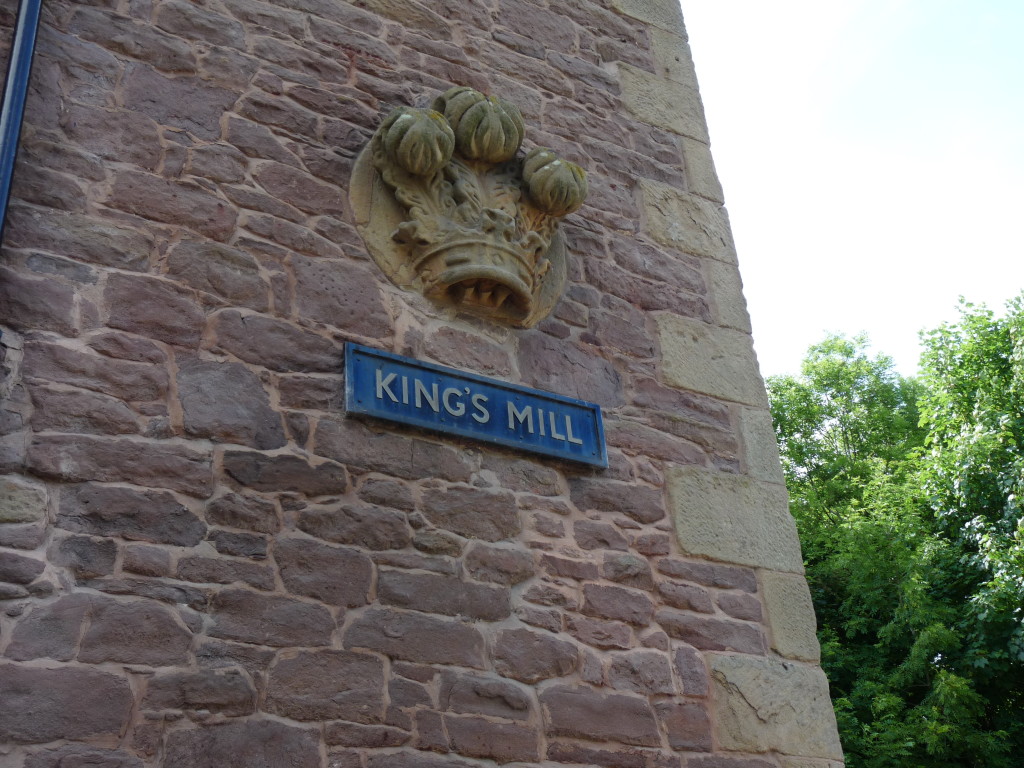
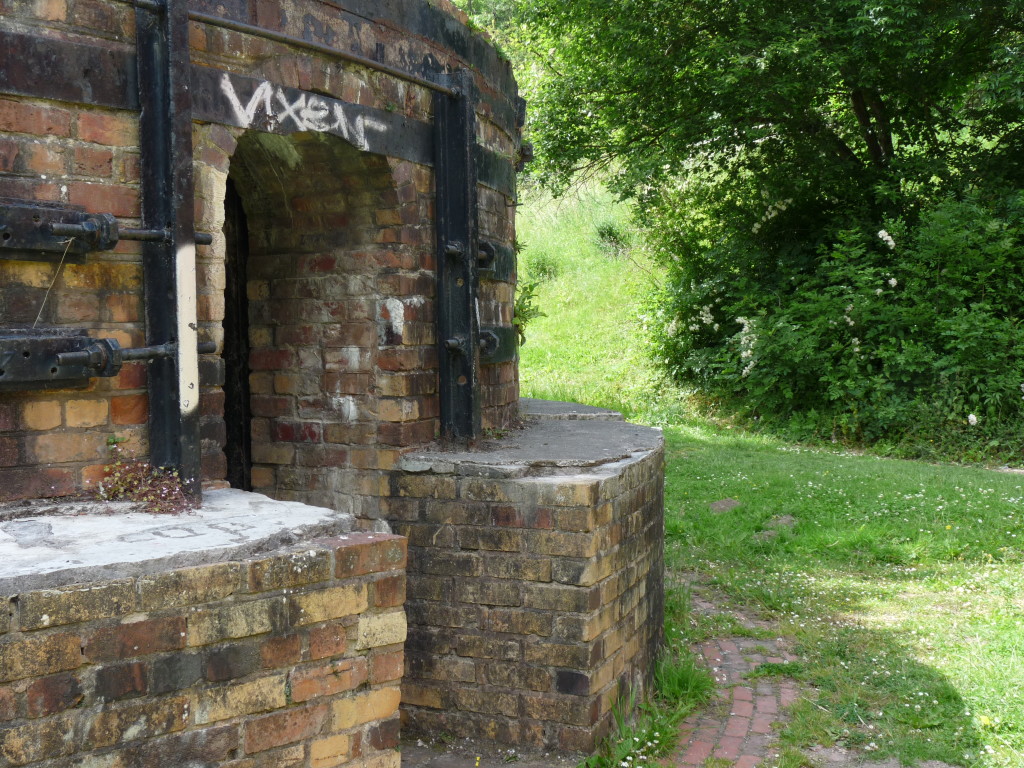 Kingsmill Bridge dates from 1782 and marks the point where the two rivers join. It’s quite a steep climb down to water-level, but there are plenty of branches to hold.
Kingsmill Bridge dates from 1782 and marks the point where the two rivers join. It’s quite a steep climb down to water-level, but there are plenty of branches to hold.
I dip my toes into the waters and wave a salute to the river, a combined force now, as it makes its way onward towards the River Dee.
Words and images by the author
Rob St John’s Surface Tension is available here
A market town, a parliamentary borough, the head of a Union, and a parish, chiefly in the hundred of Bromfield, county of Denbigh; 26 miles (SE by E) from Denbigh, 18 (ESE) from Ruthin, and 187½ (NW) from London; ….. and containing 12,921 inhabitants, of whom 5818 are in the townships of Wrexham Abbot and Wrexham Regis, forming the town.
A Topographical Dictionary of Wales, 1849, Samuel Lewis
There is something profoundly binate embedded in the very nature of the town of Wrexham in North Wales. A border town straddling the divide between England and Wales. To the east of the town centre is Wat’s Dyke, constructed in early Saxon times when Wrexham was a Welsh outpost, while to the west is Offa’s Dyke, which was built much later after Wrexham had fallen into Mercian Saxon hands. The town was returned to Wales after the Norman Conquest, but still retains that duality of psyche that comes from being a border territory.
In the English Civil War Wrexham, like much of Wales, was firmly Royalist. But the town surrendered to a division of Cromwell’s army without a shot being fired and then decided to support the Parliamentary cause. A Janus-faced town, looking both ways, an accident of topography making it necessary for the locals to be prepared to switch sides in order to survive.
Although there is some evidence of a small Roman settlement at Wrexham, the town itself was founded in the Middle Ages. The area that is now the town was part of the Marcher Lordship of Bromfield and Yale and, at some point in the twelfth-century, the Marcher Lord granted lands to the control of monks from Valle Crucis Abbey in nearby Llangollen. Thus, from its very inception, Wrexham had two identities: Wrexham Abbot, the part of the town that belonged to the Church, and Wrexham Regis, the remainder of the town which answered to the King.
The two separate townships continued to grow, cheek by jowl, and after the Church was disestablished they became separate parishes: Wrexham Abbot and Wrexham Regis. This continued right through to 1885 when, as part of a process of civic reform, Wrexham Abbot was dissolved as an entity and incorporated into the parish of Wrexham Regis. By 1974 another round of local government reform killed off Wrexham Regis too.
But that wasn’t quite the end of the matter: echoes of Abbot and Regis resound throughout Wrexham’s town centre. The core of the town still retains much of its medieval street pattern with a web of narrow streets and alleyways centring on the parish church of St Giles. In this area we find Temple Row and Church Street hinting at an ecclesiastical heritage and, on the other side of Town Hill, Abbot Street provides a potent reminder of the days of Wrexham Abbot.
To find street names indicating a connection with Wrexham Regis we have to look to the north of the town’s medieval core. Here we find King Street and Regent Street and, on Lord Street, a hair salon called Regis! There is no definitive map of the boundary between Abbot and Regis; I suspect the line was always a bit haphazard even in times gone by. However, most local historians seem to accept that Regis was to the north of the River Gwenfro and Abbot was centred on the original core of the town to the south of the river: the part that grew up around the medieval parish church.
River is probably too grand a name for the Gwenfro, it is more of a brook. But it has great historical significance for the town as it was essential for Wrexham’s once important tanning and brewing industries. Much of the river has now been culverted through the town centre, but it is still possible to trace its line and walk along some sections of it, which is what I did when I went in search of evidence of Abbot and Regis.
I am fascinated by borders and edge-lands, those special places where two identities meet and, at the point of the tectonic clash of the two, an amorphous, but fascinating, third identity often emerges. Tracing the route of the River Gwenfro, Abbot to the south and Regis the north, I ponder the nature of duality, or deuoliaeth as it is called in Welsh. This idea of the binary seems to resonate in our mythologies and archetypes: Gemini’s twins, Castor and Pollux, Janus, and Orthus the two-headed dog.
Casting our eyes up from the streets to the heavens, it’s an amusing irony that astronomers have discovered a rich sprinkling of double stars in the Gemini constellation (United States Naval Observatory’s Washington Double Star Catalog).
Those who travel to mountain-tops are half in love with themselves, and half in love with oblivion.
Robert Macfarlane, Mountains of the Mind: A History of a Fascination
A few years ago, just after the birth of my youngest daughter, I developed a fault with my heart’s rhythm; its beat was rapid and irregular. The doctors could find no obvious cause for my condition, but the illness left me physically incapacitated to the extent where I was breathless after walking just a short distance. As someone who’d always been very active, I found this extremely frustrating and became quite depressed.
A couple of months later the medication I’d been prescribed seemed to kick in and my heart returned to its normal rhythm. Now, apart from the occasional short episode and the need to take tablets each day, I’m fully recovered. But, while I was ill I worried about what lay before me: how I would work, how I would care for my family and how I would do all the things I liked to do, like travel and walking.
I worried, but my mind also began to work, very gradually, towards a kind of resolution; a willingness to embrace a new, albeit more restricted, lifestyle. But one thing for me was emblematic of the kind of activity I might never be able to take part in again; I felt desperately sad that I might never again experience the pleasure of walking up a mountain and standing on its peak.
What is it about mountain-tops? Why do they exercise such a hold on the human imagination? In Greek mythology Mount Olympus was the home of the Gods, with the thrones of Zeus and the eleven other deities located in a temple high in the clouds. Mountains also played an important part in the beginnings of the Judeo-Christian religions: Moses received the Ten Commandments on the summit of Mount Sinai and, in the New Testament gospels, Jesus experienced his transfiguration on a mountain-top.
More recently poets, thinkers, artists, writers and composers, from the Romantics to the Beats, have eulogised the mind-expanding possibilities of wandering among the hills. In The Dharma Bums Jack Kerouac describes an ascent in the Sierra Nevada and asks: “Who can leap the world’s ties and sit with me among white clouds?” Robert Macfarlane, in his Mountains of the Mind: A History of a Fascination, posits mountains as the only wilderness landscape most of us will ever have the chance of experiencing. When we walk upon a mountain, he suggests, we are forcefully reminded that the world is far more than just a human construct.
Mountains have an undeniable physicality about them; in pushing ourselves to reach a summit we experience an altered state of consciousness in both our mind and our body. As the American poet Gary Snyder puts it: “That’s the way to see the world, in our own bodies.”
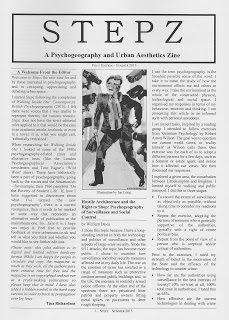 This is a short extract from a longer piece by Bobby Seal published in S T E P Z: A Psychogeography and Urban Aesthetics Zine. STEPZ is edited by Tina Richardson and the pilot edition contains a heady melange of essays, fiction, reviews, maps and images. It is available for free download here and for hard-copy purchase here.
This is a short extract from a longer piece by Bobby Seal published in S T E P Z: A Psychogeography and Urban Aesthetics Zine. STEPZ is edited by Tina Richardson and the pilot edition contains a heady melange of essays, fiction, reviews, maps and images. It is available for free download here and for hard-copy purchase here.
The drawing accompanying this piece is by Ian Long. Check out more of Ian’s work here.
Viewed from my vantage point on the old lifeboat station, Hilbre’s role as guardian of the seaward approach to the River Dee becomes clear. Her cliffs, layers of weathered red and yellow sandstone come to a point just here. Sitting here, facing the Irish Sea, I feel like I am on the prow of a ship; an old battered ship maybe, but one which had stood proud and determined against all the incoming assaults the sea could throw against it.
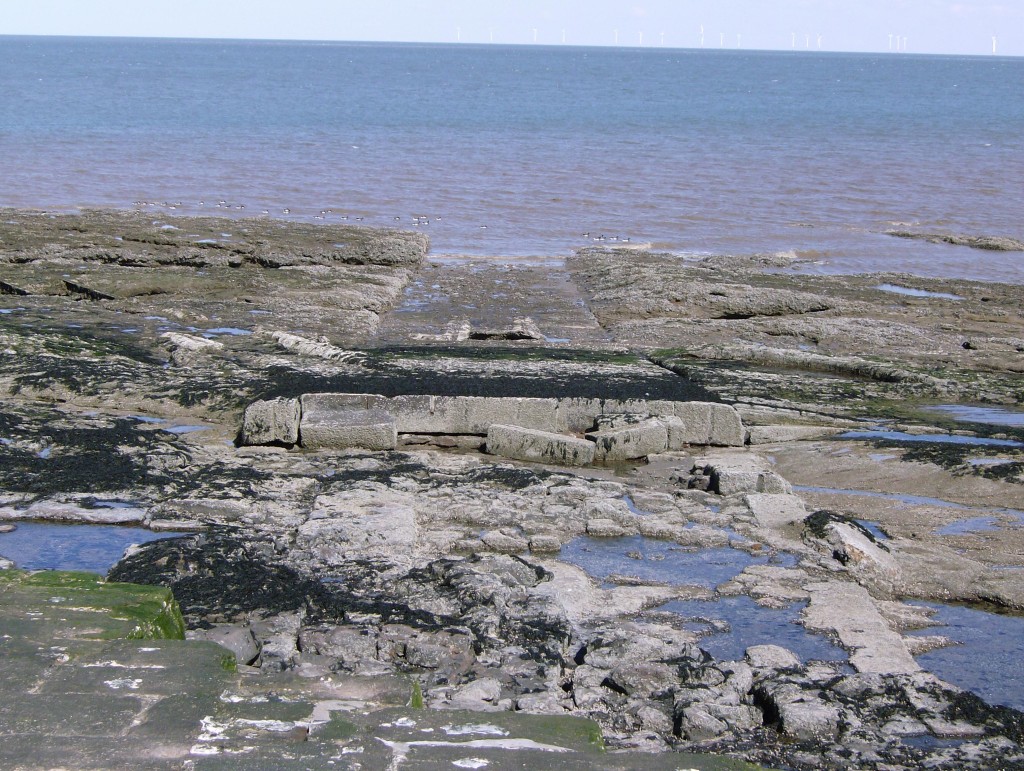
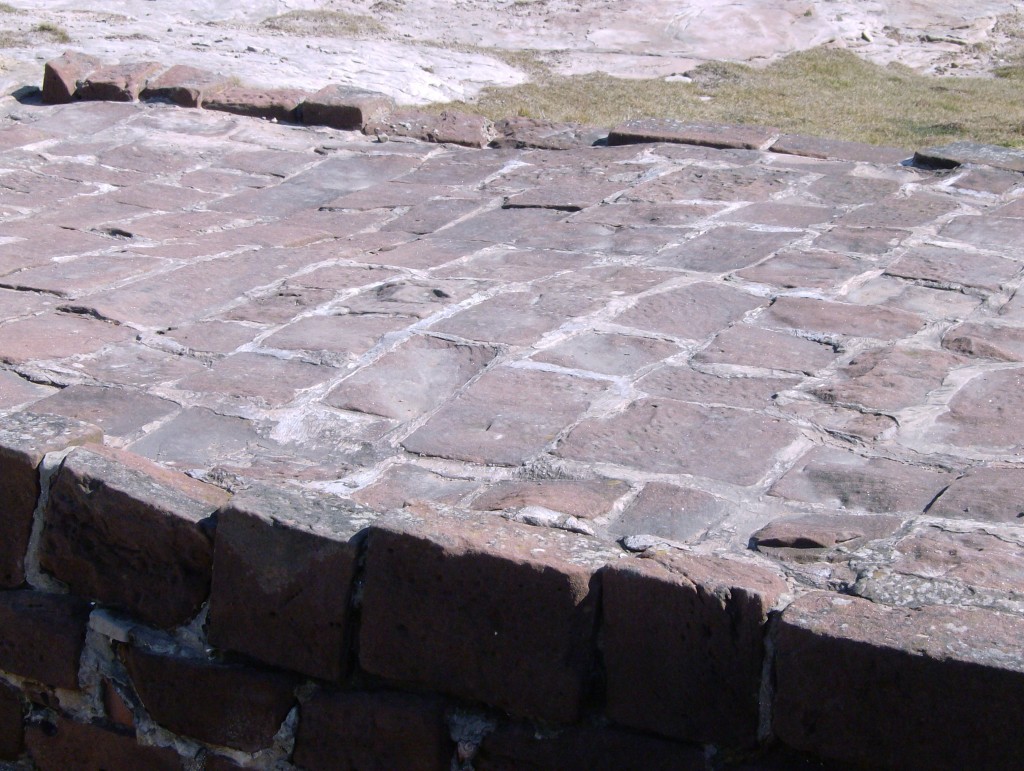 The sandstone seems very familiar. Familiar not so much because of any previous visit to Hilbre, but because this is the same local stone used for so many of Liverpool’s older buildings. It is the masonic sandstone which binds Liverpool to the bedrock of its bluff along the side of the Mersey.
The sandstone seems very familiar. Familiar not so much because of any previous visit to Hilbre, but because this is the same local stone used for so many of Liverpool’s older buildings. It is the masonic sandstone which binds Liverpool to the bedrock of its bluff along the side of the Mersey.
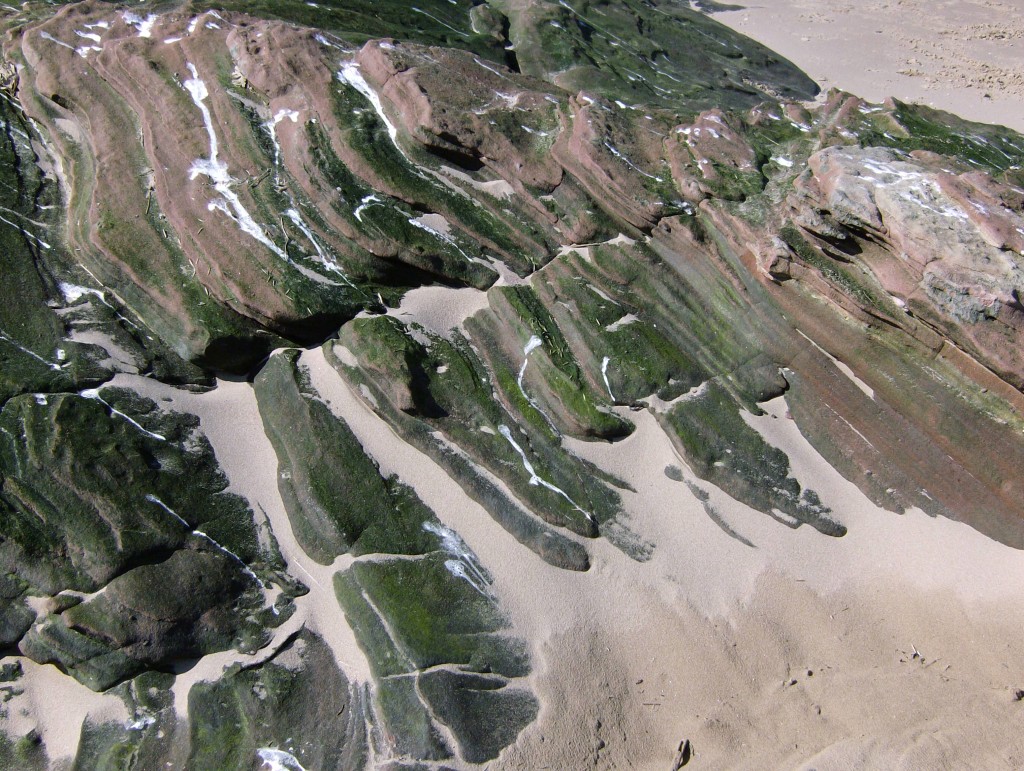
 Back on the slipway I look up the track to the crest of the island; the low stone buildings shimmer in the heat haze. Turning to the west I see the vast expanse of the estuary of the Dee, grey-blue in the sunshine, and beyond that the smudge of the Welsh coastline.
Back on the slipway I look up the track to the crest of the island; the low stone buildings shimmer in the heat haze. Turning to the west I see the vast expanse of the estuary of the Dee, grey-blue in the sunshine, and beyond that the smudge of the Welsh coastline.
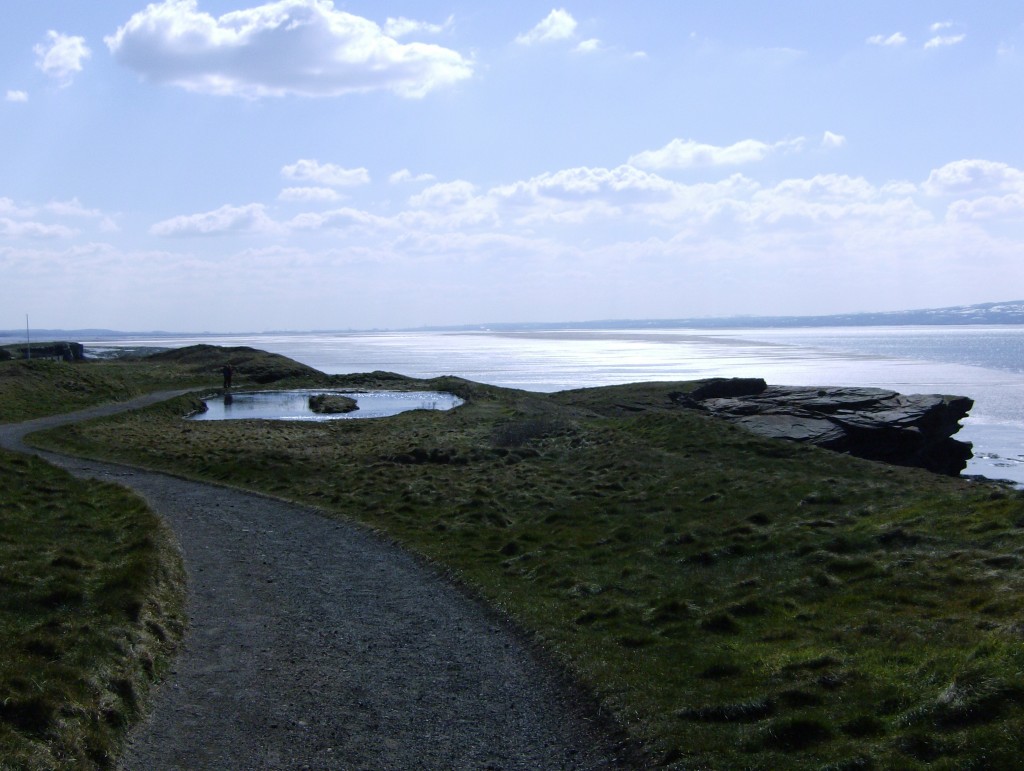 I walk along the cliff-top of the eastern edge of the island now and stop and face the water. To my left is Hoylake and, at the very tip of the Wirral peninsula, the Red Rocks. I switch my gaze to the right, tracing the line of sand dunes as far as West Kirby with its marina and the slipway where I had started my walk. But the huge expanse of sand I had walked over is now gone. In its place, but for the odd sandbank, is an expanse of grey water. And clearly the tide is coming in quickly; foamy waves are already lapping at the few remaining stretches of sand. I’d set out too long after low tide and had missed my opportunity to walk back over the sands.
I walk along the cliff-top of the eastern edge of the island now and stop and face the water. To my left is Hoylake and, at the very tip of the Wirral peninsula, the Red Rocks. I switch my gaze to the right, tracing the line of sand dunes as far as West Kirby with its marina and the slipway where I had started my walk. But the huge expanse of sand I had walked over is now gone. In its place, but for the odd sandbank, is an expanse of grey water. And clearly the tide is coming in quickly; foamy waves are already lapping at the few remaining stretches of sand. I’d set out too long after low tide and had missed my opportunity to walk back over the sands.
The water swallowed him up and he slipped down into its salty gullet. He didn’t struggle at first; he was too shocked, stunned. A deep roaring rose in his ears and his field of vision faded from bubbling white to soupy brown. Then, all was darkness; a darkness which seemed to catch hold of his body, to embrace him and to fill his whole being, flowing into his insides as well as enveloping the outside.
The voice of the water was honeyed, soothing. Then, as his falling seemed to slow, he cried out. He could hear the shout, somewhere in his head, but his voice was immediately stifled by water filling his mouth, his throat and his lungs. The taste of brine and iodine on his tongue, a crushing pressure in his chest so that it felt as if his lungs would burst. His muscles tensed and, at last, as if it had never occurred to him before, he struggled. He thrashed and struck out with all four limbs; he threw back his head and twisted at the waist. The water was trying to crush him.
For a second he paused. Was he falling or rising? He could not tell. Which way up was he? He had no idea. All around was black, cold and silent. His muscles relaxed and he became aware of his arms and legs floating and bobbing, as if rehearsing an existence free of their doomed host. And yet there was no pain, just an overwhelming, tightening pressure in his head and torso.
He fought against it no more but instead gave in. His body decided for him. He no longer struggled with the water, it was as if he was the water. And this was his home.
‘Those are pearls that were his eyes. Look!’
Words and images by Bobby Seal. ‘Pearls’ quote from T.S. Eliot’s The Waste Land
This past month Psychogeographic Review has been reading:
My reading this month has leaned very heavily towards autobiographical works. I didn’t plan to read these three books at the same time but, in doing so, I was struck by the stark contrasts and subtle similarities of three very different approaches to the craft of autobiography.
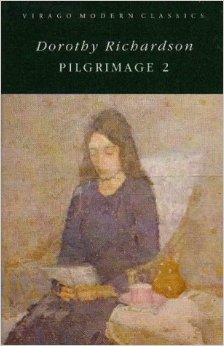 Dorothy Richardson – ‘Pilgrimage 2’ (Virago Press, 2002)
Dorothy Richardson – ‘Pilgrimage 2’ (Virago Press, 2002)
This volume from Virago comprises two of Richardson’s novels from her 13-novel Pilgrimage series: The Tunnel (1919) and Interim (1919). I read Richardson for my MA dissertation and it is a joy to read her works once more, but this time simply for pleasure. She creates the story of a young woman’s life, that of her alter-ego Miriam Henderson, but writes in a ground-breaking narrative style that is freed from the straight-jacket of the all-seeing, all-knowing narrator.
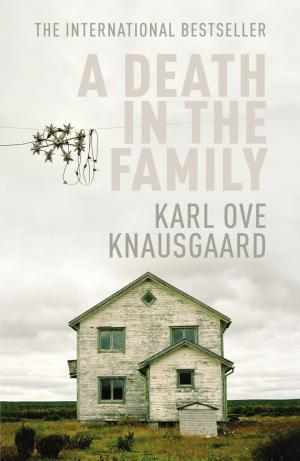 Karl Ove Knausgaard – ‘A Death in the Family’ (2009)
Karl Ove Knausgaard – ‘A Death in the Family’ (2009)
Norwegian novelist Karl Ove Knausgaard took a similar starting point for his autobiographical My Struggle series of books. When asked why he started the the project he replied that he had become sick of the idea of writing about another ‘fabricated character in a fabricated plot’. The result is a work of painstaking detail and searing honesty.
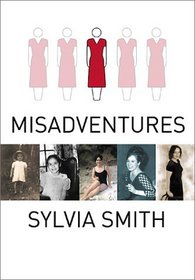 Sylvia Smith – ‘Misadventures’ (2001)
Sylvia Smith – ‘Misadventures’ (2001)
When Sylvia Smith’s autobiography was published in 2001 many critics thought it was a literary joke. Misadventures comprises a series of short vignettes from her life. Smith’s tales are, for the most part, inconsequential and are told in a simple, often bathetic, style. Yet this story of the life of a very ordinary woman builds in power and poignancy as she relates the details of her relationships, boring jobs, shopping trips and evenings out. The overall effect is extremely moving.
Meanwhile, we were listening to:
 Rob St John – ‘Surface Tension’ (2015)
Rob St John – ‘Surface Tension’ (2015)
Sometimes with a project of this ambition it seems the initial concept overshadows the final creative achievement. Thankfully this is not the case with this, Rob St John’s sublime multi-modal work. As he describes it: “Surface Tension is a project I have been working on since last summer, exploring the River Lea in East London through sound, writing and photography. Commissioned by the Thames21 charity’s ‘Love the Lea’ campaign, Surface Tension uses field recordings, tape loops, analogue synth, 120 and pinhole film photography to creatively interpret water pollution.”
And watching:
 ‘The Falling’ – Carol Morley (2014)
‘The Falling’ – Carol Morley (2014)
The Falling is Carol Morley’s study of friendship, sexuality and mass hysteria at a girls’ school in the 1960s. She creates a satisfying mix of uncomfortable psychological insights and black humour seasoned with a hint of the uncanny.
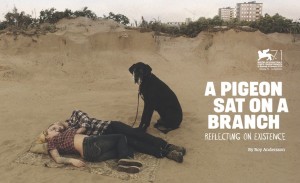 ‘A Pigeon Sat on a Branch Reflecting on Existence’ – Roy Andersson (2014)
‘A Pigeon Sat on a Branch Reflecting on Existence’ – Roy Andersson (2014)
Roy Andersson’s latest film takes us through a series of episodes of existential pondering. He reaches for truth by deliberately avoiding any hint of superficial reality: his interiors appear to be constructed from balsa-wood, he has a colour palette that is largely restricted to a washed-out shade of green and his actors all wear corpse-like pale makeup. Yet this is a genuinely funny and profound film; rather like Alexei Sayle channelling Samuel Beckett.
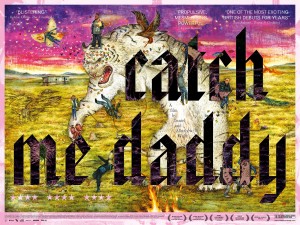 ‘Catch Me Daddy’ – Daniel Wolfe (2014)
‘Catch Me Daddy’ – Daniel Wolfe (2014)
Laila and Aaron are a young couple, one Asian the other white, who seek quiet anonymity in a caravan on the Yorkshire moors. But Laila’s brother has other ideas. The script by Daniel and Matthew Wolfe is acid sharp and Robbie Ryan’s camera evokes a landscape tinged with an eerie beauty.
In April 2013 I wrote on this site about the plotlander movement of the inter-war years and the riverside chalets on the Dee at Farndon, near Chester. The piece stirred up quite a lot of interest; I even heard from a lady in New Zealand who had lived in one of the chalets when she was a girl in the nineteen-fifties.
One person I’ve kept in touch with since the piece was published is Lesley Martin. Lesley is an environmental artist and educator and lives in one of the chalets on the English bank of the river, although she tells me she and her partner will shortly be moving to live in Wales in another chalet on the opposite bank. This is Lesley’s website, Free Range Classrooms.
I’m currently writing a book about a journey on the River Dee; a kind of mythogeographic voyage from sea back to source. Lesley shares my fascination with the chalets of Farndon, in fact she is currently working on an exhibition and book about the history of the structures and the people who live in them. She already has the offer of an exhibition space in the village and a larger gallery in a nearby town is very enthusiastic about the project.
I’ll share further news about the chalet project on this blog and on Twitter.
Children, Madonna and Child and Death and Transfiguration move relentlessly through the three stages of Robbie’s life. But Davies consciously breaks the rules of linear time as he moves backwards and forwards exploring the jumble of Robbie’s memories, his youth, adulthood and old age. Davies does not want us to just look at Robbie’s life, he requires us to witness it, and presents each fragment as if part of a body of evidence.
Although at one level we know that these are films set in the Liverpool of the 1970s and 1980s, because that is when they were made, Trilogy is essentially set in a perpetual present. We all live our lives in that way, never questioning what we mean by ‘now.’ And yet the past is always present and, through memory, we re-enact it, again and again.
In one of the most ineffably moving scenes in Children, an eleven-year-old Robbie and his mother make a journey through Liverpool by bus. In one’s memory the scenes one plays out operate from just one point of view. And so it is with this journey: the camera, still and unblinking, observes Robbie and his mother from one side as they sit, mother looking ahead and robbie writing in the mist of his breath on the window.
Courageously, Davies holds this shot for a full two minutes. There is no dialogue and no sound, other than a haunting oboe lament. Then he switches the angle and we are face on to the mother and child. The sound clicks in, first the labouring engine of the bus and then a sob, and we realise that Robbie’s mother is crying. She continues to look ahead as the tears stream down her cheeks. Robbie looks at her, confusion and fear in his face, but neither of them say anything.
Davies offers no explanation of the scene on the bus. How could there be an explanation? This is a childhood memory and so many of those memories, things one is too young to understand at the time, remain locked in mystery forever. Mam cried, and that is all Robbie remembers. It is all he needs to remember.
This is a short extract from an essay by Bobby Seal published in the Irish journal gorse. Issue three of gorse is available for purchase here.